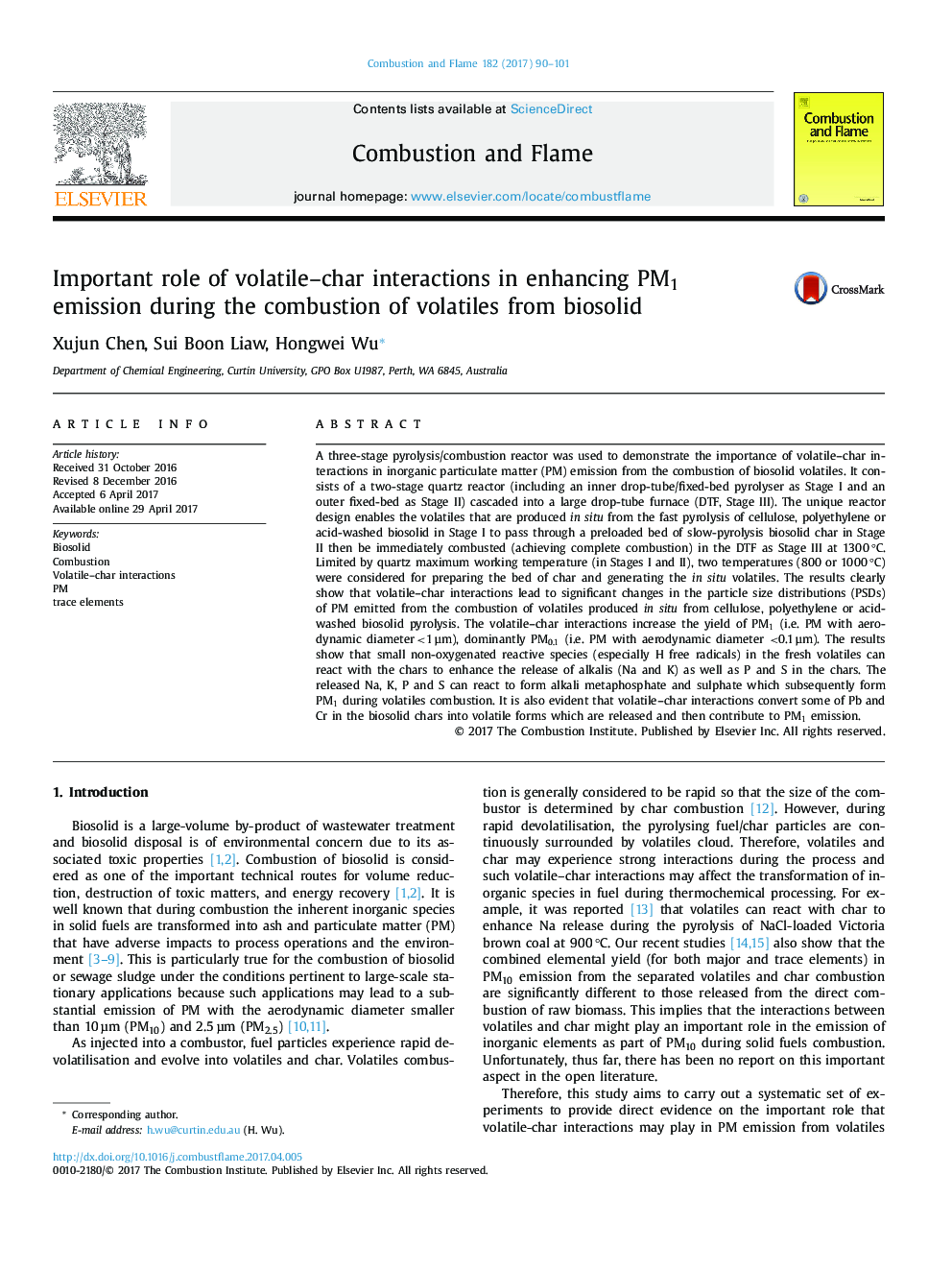| کد مقاله | کد نشریه | سال انتشار | مقاله انگلیسی | نسخه تمام متن |
|---|---|---|---|---|
| 4764415 | 1423555 | 2017 | 12 صفحه PDF | دانلود رایگان |
عنوان انگلیسی مقاله ISI
Important role of volatile-char interactions in enhancing PM1 emission during the combustion of volatiles from biosolid
دانلود مقاله + سفارش ترجمه
دانلود مقاله ISI انگلیسی
رایگان برای ایرانیان
کلمات کلیدی
موضوعات مرتبط
مهندسی و علوم پایه
مهندسی شیمی
مهندسی شیمی (عمومی)
پیش نمایش صفحه اول مقاله

چکیده انگلیسی
A three-stage pyrolysis/combustion reactor was used to demonstrate the importance of volatile-char interactions in inorganic particulate matter (PM) emission from the combustion of biosolid volatiles. It consists of a two-stage quartz reactor (including an inner drop-tube/fixed-bed pyrolyser as Stage I and an outer fixed-bed as Stage II) cascaded into a large drop-tube furnace (DTF, Stage III). The unique reactor design enables the volatiles that are produced in situ from the fast pyrolysis of cellulose, polyethylene or acid-washed biosolid in Stage I to pass through a preloaded bed of slow-pyrolysis biosolid char in Stage II then be immediately combusted (achieving complete combustion) in the DTF as Stage III at 1300 °C. Limited by quartz maximum working temperature (in Stages I and II), two temperatures (800 or 1000 °C) were considered for preparing the bed of char and generating the in situ volatiles. The results clearly show that volatile-char interactions lead to significant changes in the particle size distributions (PSDs) of PM emitted from the combustion of volatiles produced in situ from cellulose, polyethylene or acid-washed biosolid pyrolysis. The volatile-char interactions increase the yield of PM1 (i.e. PM with aerodynamic diameter <1 µm), dominantly PM0.1 (i.e. PM with aerodynamic diameter <0.1 µm). The results show that small non-oxygenated reactive species (especially H free radicals) in the fresh volatiles can react with the chars to enhance the release of alkalis (Na and K) as well as P and S in the chars. The released Na, K, P and S can react to form alkali metaphosphate and sulphate which subsequently form PM1 during volatiles combustion. It is also evident that volatile-char interactions convert some of Pb and Cr in the biosolid chars into volatile forms which are released and then contribute to PM1 emission.
ناشر
Database: Elsevier - ScienceDirect (ساینس دایرکت)
Journal: Combustion and Flame - Volume 182, August 2017, Pages 90-101
Journal: Combustion and Flame - Volume 182, August 2017, Pages 90-101
نویسندگان
Chen Xujun, Liaw Sui Boon, Wu Hongwei,